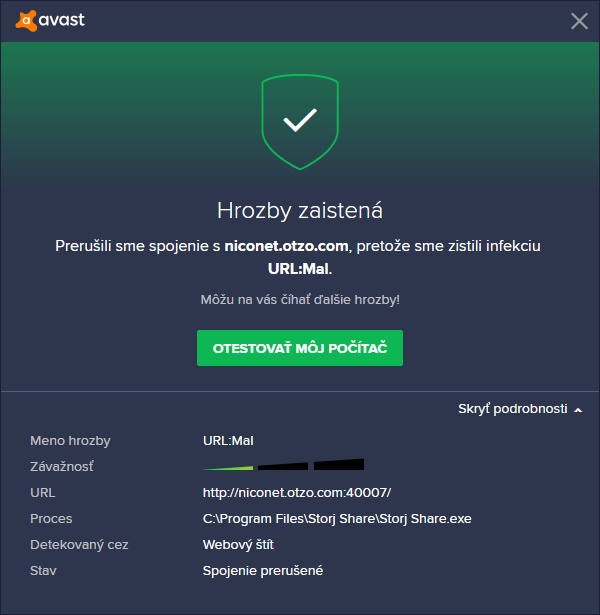- How To Add A Script Exclusion For Avast For Mac
- How To Add A Script Exclusion For Avast For Mac Review
Back to one of the 3 A's Avira, AVG, Avast:(. How is Malware bytes, are they solid or just another new kid on the block – Alex S Feb 24 '16 at 7:13 Very Solid used it for years. The best part of Avast Free Mac Security is their mac viruses is reaching 100 percent of on-demand malware (detected during an active scan) and 98.9 percent of on-access malware (detected as a file is opened, executed or downloaded).
I've installed avast from brew cask
You can, however, add folders, websites or applications that you deem as trustworthy to an exclusions list, thus preventing Avast from producing false positives. You can also make Avast bypass folders during manual scans by adding them to a temporary exclusions list. To bypass Avast and visit a blocked website, you'll need to disable the Web Shield module or add the website to your Exclusions list. Some websites can be dangerous, so your computer and data are. Open Avast Free Antivirus and go to 'Settings'> 'Exclusions'. For files, select the ones you wish to exclude in the tab 'File paths'. For Web pages, add them to the tab 'URLs'. The Exclusions screen allows you to specify URL addresses, MIME-type extensions, or processes that you want Web Shield to ignore. To add a new item, tick the relevant option, then type the URL, extension, or file location into the text box. To add a process, click Browse, select a file (.exe), then click OK. To add another item to the list, click Add.
I'm trying to add /usr/local/share/metasploit-framework folder as an exception for a file system shield.Even though I have 'show hidden files' option enabled on my mac, Avast is still not showing hidden files (such as /usr/...)
Avast Business Managed Exclusions Guide. This guide is for adding detected false positive file, URL, and script exceptions/exclusions for the Avast Business Antivirus (Pro/Plus) Managed Shields in the Avast Management Consoles.
Hidden files in Finder:
avast GUI - no hidden files:
How to add the exception if there is no obvious way to make Avast see hidden files? Any ideas?
1 Answer
The file selector dialog seems to not be affected by the setting to show hidden files, but you can specify a manual path to hidden folders using the Go... command. Within the selector modal, press ⌘ + ⇧ + G to access the function. From there, you can specify a path manually, even a hidden one.
Keep in mind that this only allows access to hidden folders. Hidden files are still invisible.


How To Add A Script Exclusion For Avast For Mac
Not the answer you're looking for? Browse other questions tagged macosanti-virusavastmetasploit or ask your own question.
It is a recommended practice to configure any antivirus software running on Exchange servers to exclude specific paths, processes, and file types. This recommendation is made to reduce the likelihood of your Exchange server experiencing a failure due to antivirus software locking a file or folder in a way that prevents Exchange from doing what it is trying to do. Such issues are actually quite common when antivirus software has not been configured to follow these recommendations, and usually surfaces as unpredictable failover behavior in database availability groups, as well as unexpected database dismounts.
Some time ago I published a PowerShell script that will scan an Exchange 2013 server and output a list of exclusions that follow the Microsoft recommendations. Exchange 2016 is a little different, with some items added to the list, as well as a few others removed from the list. Thanks to Matt K for pointing out several of the changes.
How To Add A Script Exclusion For Avast For Mac Review
Today I've published a new script for generating Exchange 2016 antivirus exclusions. It works the same way as the 2013 version, you run the script locally on a server in the Exchange Management Shell, and then use the output files to configure your antivirus software manually or by importing the lists (Update: when installing Exchange 2016 CU3 or later on Windows Server 2016 you can also use the script to automatically configure the exclusions in Windows Defender). I made a few improvements this time around as well, so that different lists are output for Mailbox servers vs Edge Transport servers.
You can find the new script on the TechNet Script Gallery. I hope you find it helpful for your Exchange 2016 deployments.
Paul is a Microsoft MVP for Office Apps and Services and a Pluralsight author. He works as a consultant, writer, and trainer specializing in Office 365 and Exchange Server.